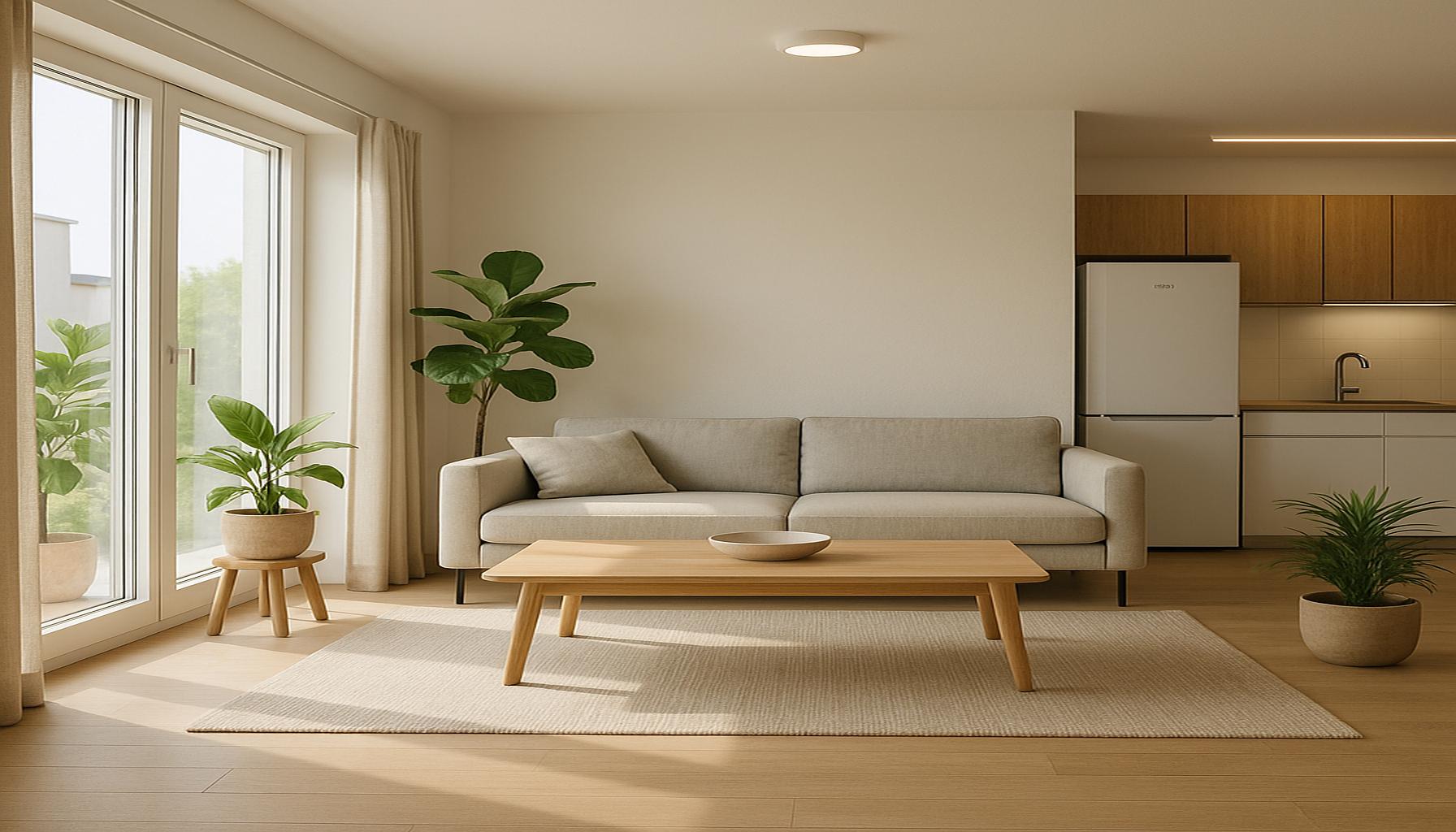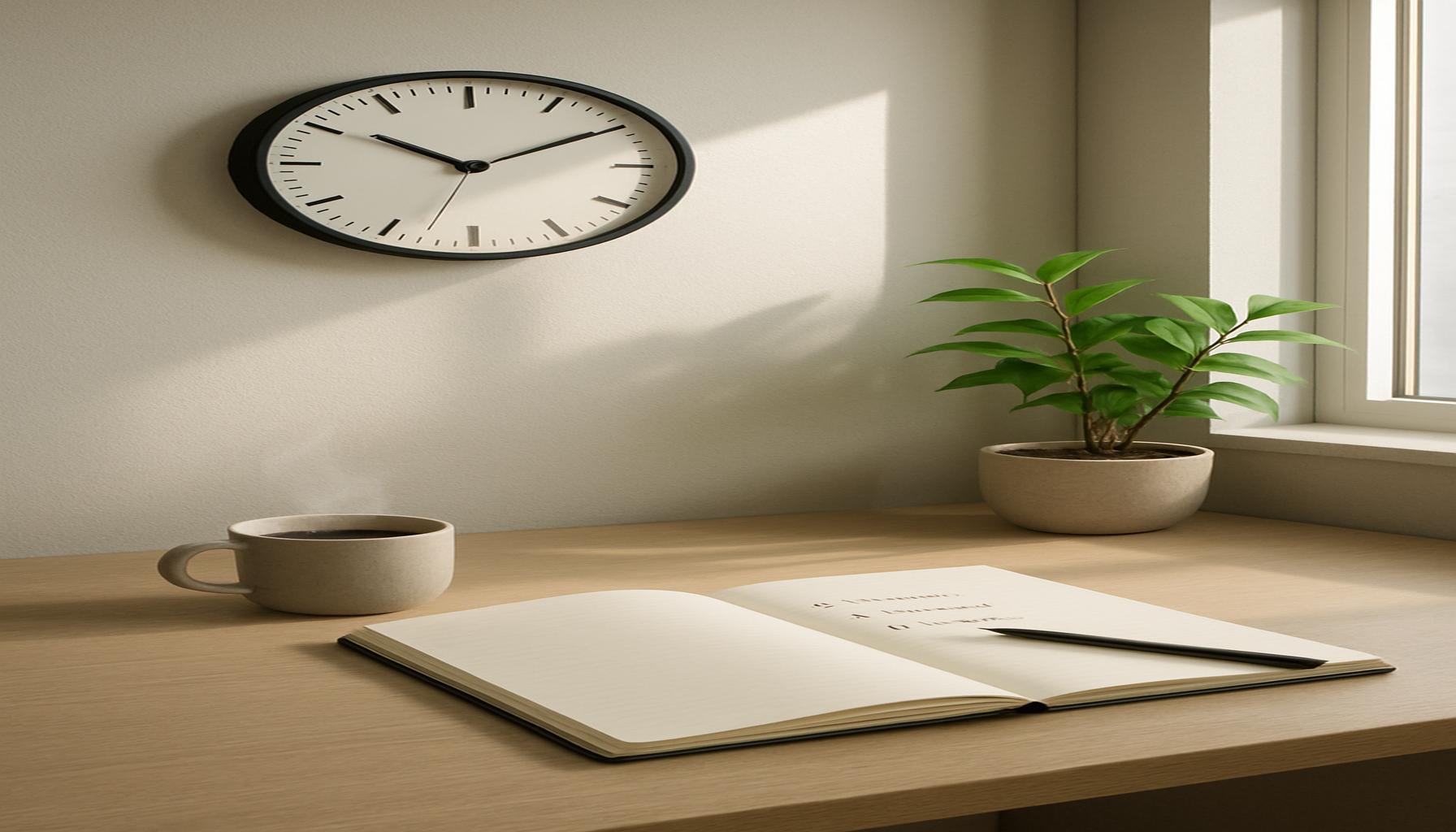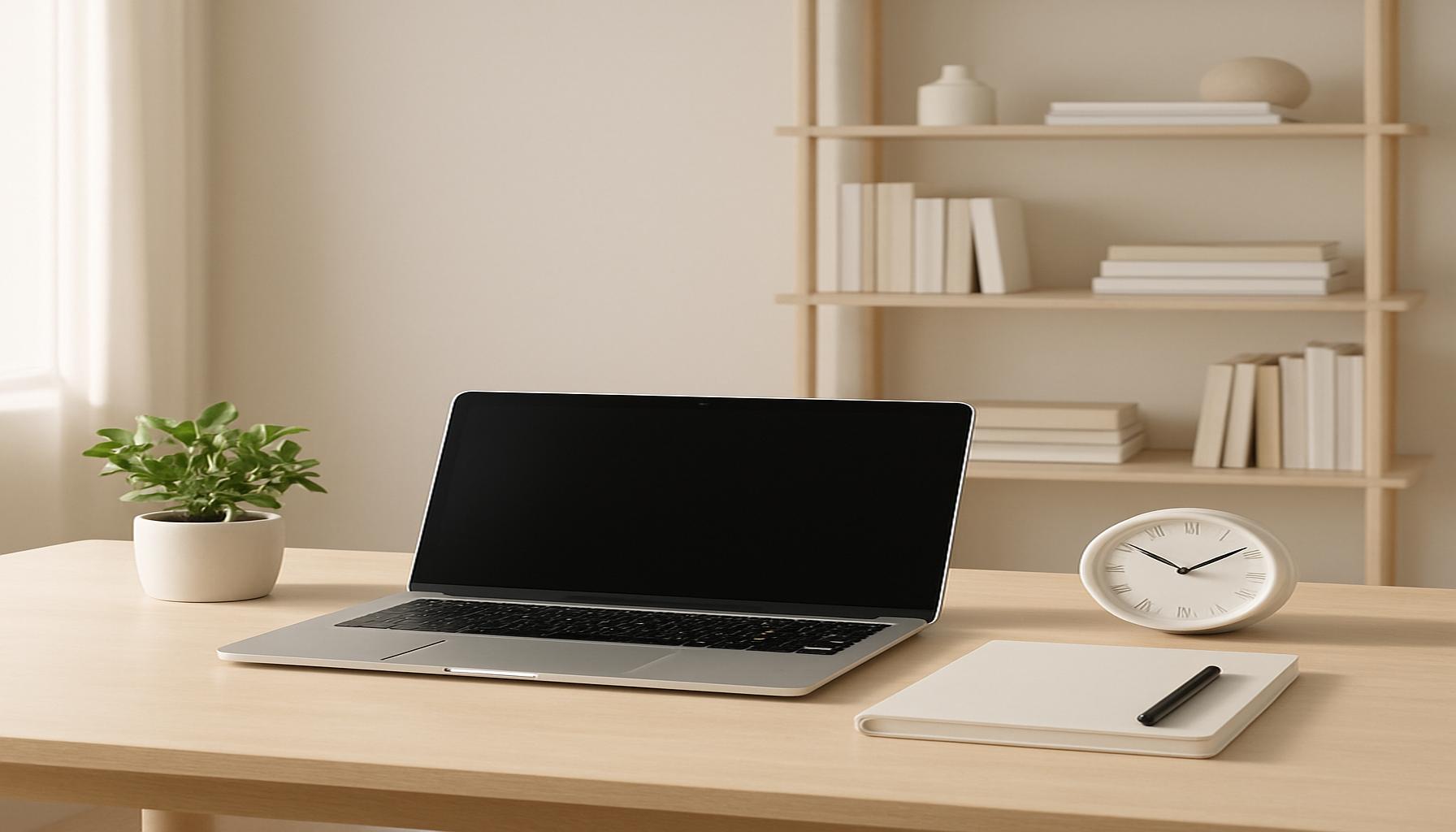Minimalism and Energy Efficiency: How to Simplify Your Home to Reduce Costs and Increase Comfort

Embracing Minimalism for a Sustainable Future
The allure of minimalism lies in its promise to simplify not just our physical spaces, but also our lives. As the pace of life accelerates, homeowners across the United States are increasingly drawn to this philosophy, recognizing that minimalism extends beyond mere decluttering. It is intertwined with the concept of energy efficiency, which is vital in addressing both personal comfort and environmental sustainability.
One of the most immediate benefits of adopting a minimalist lifestyle is the reduction in energy bills. For instance, a home filled with less clutter often boasts greater open spaces and improved insulation. This translates into less reliance on heating and cooling systems, leading to lower utility costs. According to the U.S. Department of Energy, proper insulation and air sealing can save homeowners 15% on heating and cooling bills. By minimizing excess items, homeowners naturally encourage better airflow, mitigating the need for excessive temperature control.
Furthermore, adopting a minimalist approach results in an enhanced comfort level within the home. A streamlined space creates an atmosphere that is visually calming and much less chaotic. Imagine walking into a room that is not overwhelmed by trinkets; instead, the few carefully curated items fulfill a purpose or bring joy, facilitating relaxation and mental clarity. This enhanced tranquility can lead to improved well-being, as studies have shown that clutter can contribute to stress and anxiety.
Another significant advantage of a minimalist lifestyle is the simplified maintenance it offers. With fewer possessions, cleaning and upkeep require a fraction of the time and effort that are typically necessary in cluttered environments. For example, consider how a living room crowded with furniture and decorative items can take hours to clean compared to a more minimalist space, which can be tidied in mere minutes. This efficiency allows homeowners to allocate their time toward more fulfilling pursuits rather than routine chores.
As we explore the intersection between minimalism and energy efficiency, it becomes crucial to identify areas within the home that can be optimized for energy savings. Actions like upgrading to energy-efficient appliances, utilizing LED lighting, and conducting energy audits to spot leaks are all effective strategies. These adjustments not only reduce energy consumption but also complement a minimalist ethos by encouraging conscious consumption.

Adopting a minimalist lifestyle not only creates a peaceful and organized atmosphere but also promotes better resource management. By selecting what truly matters and letting go of excess, homeowners can build an environment that harmonizes comfort and sustainability. This article will further dissect practical strategies, including the identification of energy-saving opportunities in the home, embracing minimalist principles to enhance living spaces, and fostering a balance between style and sustainability.
Join us on this journey to discover how embracing minimalism can transform your home into a cozy sanctuary while simultaneously slashing energy expenses. The combination of a simpler lifestyle and energy efficiency is not just a trend; it is a sustainable choice that benefits both you and the planet.
EXPLORE MORE: Click here to enhance your understanding
Optimizing Your Home for Energy Efficiency Through Minimalism
In the quest for a more sustainable lifestyle, the adoption of minimalism offers a unique intersection with energy efficiency. By intentionally reducing unnecessary items and embracing simplicity, homeowners can significantly impact their energy consumption, leading to lower costs and increased comfort.
To fully harness the benefits of minimalism, it is essential to recognize which elements of your home contribute to energy waste. Common culprits include outdated appliances, inefficient lighting, and poor insulation. By addressing these factors while cultivating a minimalist environment, you can create a space that is not only aesthetically pleasing but also energy-smart.
Identifying Energy-Wasting Areas in Your Home
Here are some areas to assess as you simplify your home for improved energy efficiency:
- Appliances: Upgrade to Energy Star-rated appliances, which consume less electricity and have a lower environmental impact. For example, an energy-efficient refrigerator can save you hundreds of dollars over its lifetime.
- Lighting: Replace incandescent bulbs with LED lighting. LEDs use up to 75% less energy and can last up to 25 times longer, significantly reducing both costs and waste.
- Insulation: Ensure that your home is adequately insulated and that windows and doors are sealed properly. Poor insulation can lead to significant heat loss in the winter and increased cooling expenses in the summer.
- Heating and Cooling Systems: Consider upgrading to a programmable thermostat, which allows for better control over your home’s temperature and reduces energy usage when you are away.
Addressing these aspects will heighten your home’s energy efficiency, complementing the essence of minimalism. Fewer items mean less energy spent on lighting, cleaning, and maintaining a cluttered space. Additionally, a minimalist environment invites you to prioritize quality over quantity, leading to purchases that are more eco-friendly and efficient.
Minimalism also supports a shift in mindset regarding consumer habits. By focusing on the essential, homeowners are encouraged to invest in durable, high-quality goods that align with their lifestyle, rather than succumbing to the cycle of accumulating items that often end up as waste. As a result, this approach not only conserves energy but also respects our planet’s resources.
As we delve deeper into the relationship between minimalism and energy efficiency, it’s clear that simplification can lead to significant cost savings and a more comfortable home. The choices made in this journey ripple outwards, fostering profound impacts on our well-being, our finances, and the environment. The next steps involve practical strategies for further enhancing this synergy in your own space.
Understanding Minimalism and Energy Efficiency
The concept of minimalism extends beyond mere aesthetics; it embodies a lifestyle choice aimed at enhancing well-being through simplicity. By decluttering your living space, you create a serene environment that allows for better mental clarity and a more focused life. Minimalist designs emphasize functionality, ensuring that every item serves a purpose, reducing the need for excessive possessions. This approach not only streamlines your home but also promotes energy efficiency.Energy efficiency correlates closely with minimalism, as it encourages homeowners to rethink their habits and consumption. For instance, using energy-efficient appliances lowers energy bills and conserves precious resources. Upgrading to LED lighting, sealing doors and windows, and incorporating energy-efficient heating and cooling systems are practical steps that align with minimalist values by eliminating waste and enabling comfort.
Creating a Sustainable Living Space
To truly embrace the spirit of minimalism while enhancing energy efficiency, consider incorporating sustainable materials into your home design. Materials like bamboo flooring and reclaimed wood furniture are not only stylish but also environmentally friendly choices. These options reduce positive energy consumption during production and add unique character to your space.Moreover, landscaping with native plants saves water and requires less maintenance, fostering a harmonious relationship with your environment. Implementing a rain garden can minimize runoff, conserving water while enriching your garden’s ecosystem. By strategically reducing the energy footprint of your home, you will be ushering in both comfort and long-term savings.
Benefits of a Minimalist and Energy-Efficient Lifestyle
Adopting a minimalist lifestyle paired with energy-efficient practices transforms your home into a sanctuary. The financial benefits of reduced utility costs can lead to greater economic freedom, empowering you to allocate funds towards experiences rather than possessions. Furthermore, the reduction in clutter contributes to less stress, allowing you to focus on what truly matters. In summary, the marriage of minimalism and energy efficiency provides a pathway to a sustainable, comfortable, and economically beneficial home. This integrated approach allows individuals to not only enjoy their living spaces more but also contributes positively to the environment, fostering a sense of accomplishment and peace.
DISCOVER MORE: Click here to enhance your productivity
Implementing Practical Minimalism for Energy Efficiency
As you begin to identify areas where energy waste occurs in your home, the next step is to act upon those insights by actively implementing principles of minimalism. Beyond simply decluttering, this involves making conscious, sustainable choices that align with both your aesthetic preferences and energy efficiency goals.
Creating a Sustainable Living Space
One of the most profound methods to improve energy efficiency in a minimalist home is through the design of your living spaces. Here are some strategies to consider:
- Multi-functional Furniture: Invest in furniture that serves multiple purposes. For instance, a comfortable sofa bed can eliminate the need for a guest room, saving space and energy used in heating or cooling unused rooms.
- Natural Light Utilization: Maximize the use of natural light to lower dependence on artificial lighting. An open floor plan can create brighter spaces while reducing the number of light fixtures needed.
- Smart Home Technology: Incorporating smart home devices can greatly enhance energy efficiency. Smart plugs and light systems allow you to control lighting and appliances remotely, further reducing energy consumption when not in use.
- Water Conservation: Minimalism extends to water usage as well. Simple switch-outs, such as low-flow faucets and showerheads, can significantly decrease water waste while contributing to lower energy costs associated with heating water.
In essence, the goal is to create a home that requires less energy to function. When you embrace minimalism, you start to evaluate what is truly necessary, thereby reducing not only clutter but also energy consumption. Each item you keep should serve a defined purpose; if it doesn’t, consider donating or recycling it.
Mindful Spending and Sustainable Choices
The principles of minimalism encourage mindful spending, which is essential in forging a sustainable environment. When considering new purchases or upgrades, prioritize energy-efficient solutions to reduce your home’s ecological footprint:
- Investing in Quality Over Quantity: Opt for high-quality items that are durable and energy-efficient. A well-insulated door or window may take a larger upfront investment, but it drastically reduces heating and cooling costs over time.
- Local and Second-hand Options: Explore local markets or second-hand stores for items that fit minimalist principles. Not only does this reduce waste, but it also often leads to unique, character-filled purchases that enhance your home.
- Energy Audits: Consider having an energy audit performed to pinpoint specific areas where efficiency can be improved. Many utility companies offer these audits for free or at a reduced cost, providing an excellent return on investment.
This practice of thoughtful acquisition and conscious consumption refines your living space while simultaneously enhancing energy efficiency. It’s a cycle of mindfulness that not only benefits your home but also promotes a lifestyle that respects broader environmental considerations.
Each of these practices dovetails with the tenets of minimalism, leading to a more harmonious balance of comfort and energy savings. By adopting these strategies, you can cultivate a home that reflects your values while supporting a more sustainable future.
DISCOVER MORE: Click here to streamline your digital life
Conclusion
Embracing minimalism is more than just a design trend; it represents a profound shift towards living intentionally and sustainably, particularly concerning energy efficiency. By consciously reducing clutter and focusing on what truly matters, you can transform your home into a space that not only reduces costs but enhances your overall comfort. As outlined, implementing strategies such as choosing multi-functional furniture, maximizing natural light, and adopting smart home technology can significantly streamline your energy consumption.
Moreover, mindful spending on quality items and considering local and second-hand options contribute to a more eco-friendly lifestyle. With home energy audits, you can identify practical improvements that yield long-term savings. This journey towards a simpler, more efficient living environment encourages a lifestyle that prioritizes conscious consumption, ultimately promoting a connection to the broader ecological landscape.
In essence, minimalism paired with energy efficiency creates a symbiotic relationship: your reduced physical clutter leads to lower energy demands, which in turn allows you to prioritize comfort without the burden of excessive costs. As you explore this pathway, remember that every small, deliberate change can lead to a ripple effect of sustainability, enhancing both your quality of life and the environment. By simplifying your home, you’re not only investing in a more efficient future but also contributing to a world that values sustainability and conscious living.


